The 2006 Mini GP was the 1960s Cooper S reborn
By now it’s clear to even Mini’s most ardent fans that the company’s commitment to making affordable, spunky, tiny city cars is long gone. When BMW re-launched Mini in 2001, you could argue that the cute two-door hatchback was a legitimately small, simple, and lively urban runabout that maintained the values and characteristics of the British Motor Company original. Each generation since has drifter farther from those attributes, and toward the mainstream. Yet there was a time—before its cars went bigger, added complexity with all-wheel drive, and (albeit successfully) chased sales with the popular Countryman crossover—when Mini did more than just pay lip service to its progenitor’s heritage.
Never was that more true than with the ultimate modern-era Mini, the 2006 John Cooper Works GP Kit. The Mini GP was a true factory hot rod, the development of which in many ways mirrors the genesis of the original hot rod Mini—the Cooper S, developed by the fellow of the same name, that took the racing world by storm by winning the 1964 Monte Carlo Rally.
At a recent BMW/Mini media event, I had the chance to briefly drive both a 2006 Mini GP and a 1965 Morris Mini Cooper S Monte Carlo tribute car on rain-soaked roads in Southern California. The sensation of wheeling these two tiny terrors around only strengthened my conviction that—despite being built 40 years apart by two totally different companies—these cars showcase the best of what a Mini can be.
20190227202307)
20190227202315)
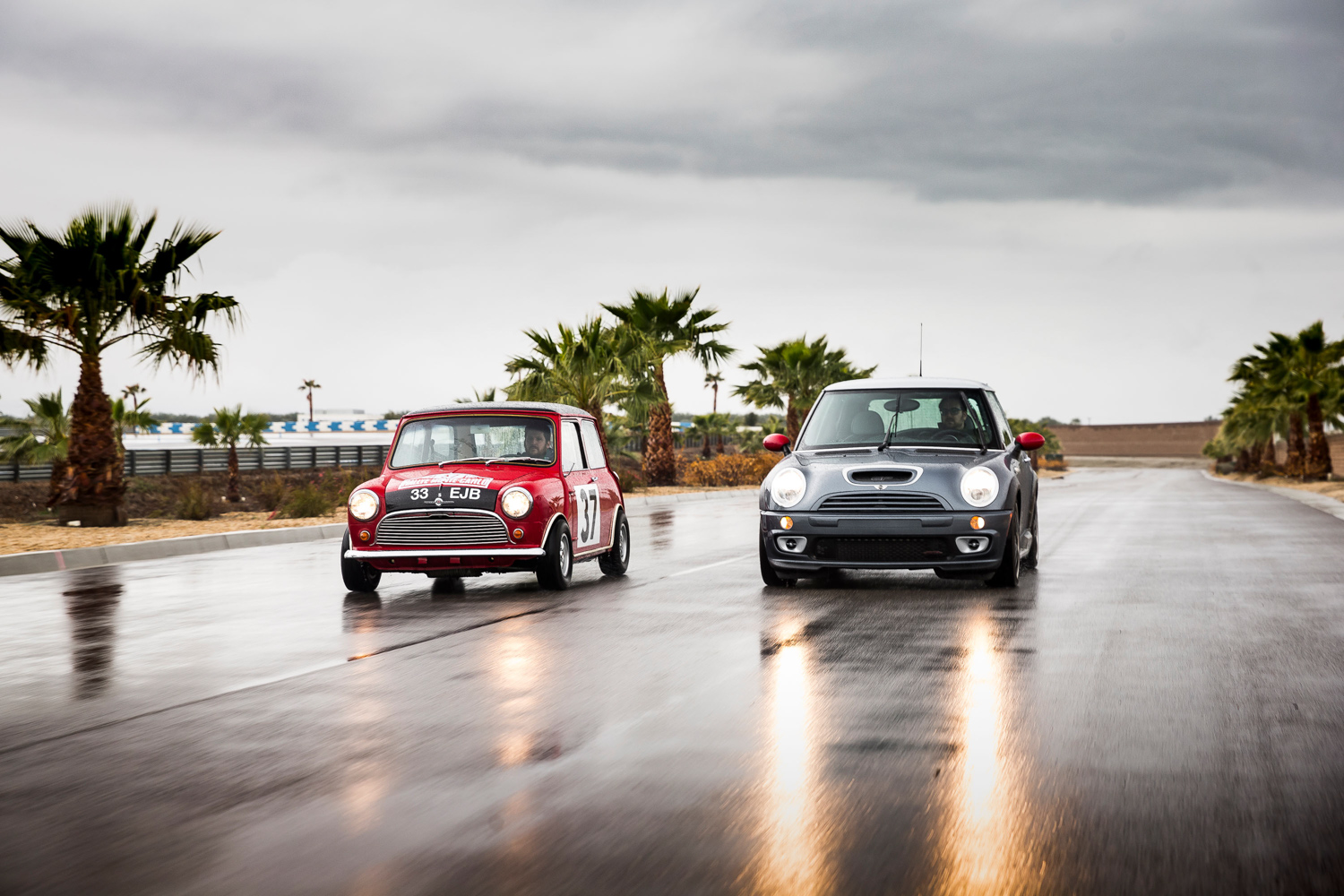
20190227202324)
John Cooper was an English sports car designer who saw the light, 34-horsepower, front-drive Mini’s performance potential as early as 1959. By the next year he was testing tuned Minis at Silverstone with drivers like Graham Hill, Jim Clark, and Jack Brabham at the helm. Rallying proved to be a strength for these Cooper-tuned Minis. After a few years of moderate success, 1964 was the year that the world got a front-row seat to one of racing’s most memorable underdog stories.
Mini entered three Cooper S cars, red with white roofs, into the Monte Carlo Rally that year, each with larger, 1071-cc four-cylinder engines spitting out a healthy 90 hp. They were competing against much larger, rear-drive vehicles with powerful six-cylinder and V-8 engines, but thanks to heavy snow on a critical, hilly leg of the race, driver Paddy Hopkirk took the lead and eventually hung on for the unlikely victory. The Mini Cooper S would win Monte Carlo two more times in the next three years, losing only in 1966 because of disqualification related to allegedly improper rally lights.
John Cooper’s son, Michael Cooper, saw similar potential in the new BMW-bred Mini Cooper when the car arrived for 2001. Using the R53-code, 168-hp supercharged Cooper S as a platform, the John Cooper Works Cooper S boasted 207 hp as well as beefier brakes and suspension. The JCW upgrade was highly popular and successful, starting off as a dealer-installed package in 2002 and eventually becoming a factory-built product in 2005.
20190227203108)
As a send-off for the R53 Cooper S at end of its life cycle in 2006, Mini built a 2000 limited-edition “GP kit” versions, developed by John Cooper Works. The 2006 Mini GP was truly the ultimate performance expression of the modern Mini. It certainly looked the part, complete with a more aerodynamic bodykit and boy-racer-approved carbon-fiber wing atop the trunk.
Happily, the GP had the chops to back up its looks. As Car and Driver reported at the time, the 1.6-liter extracted 214 hp from its screaming 1.6-liter four-banger, thanks to a re-mapped engine computer, upgraded Eaton supercharger, less restrictive intercooler, high-volume injectors, and freer-flowing exhaust. On top of that, JCW swapped out the standard rear suspension for bespoke aluminum arms and lighter wheels, along with unique chassis tuning. In place of the rear seats was a racy-looking body brace, and between the optional air-conditioning and radio, absent rear wiper, and unnecessary soundproofing, the GP shaved 62 pounds compared to the standard Cooper Works.
After situating myself in the GP’s chunky Recaro seats, I could immediately tell this car meant business. The stripped-out interior and big body brace in the back said as much. Once you fire up the supercharged four-cylinder you can hear a faint whine from behind the dashboard, which only gets more frantic you lean into the throttle, before shrieking wildly at 7000 rpm. The GP is brutally stiff and freakishly responsive to inputs, making me wish it was a clearer, drier day where I could really sample the hot hatch’s 0.9 g of grip. Compared to most modern cars, the GP feels raw and unmediated. Zipping around in it was addicting.
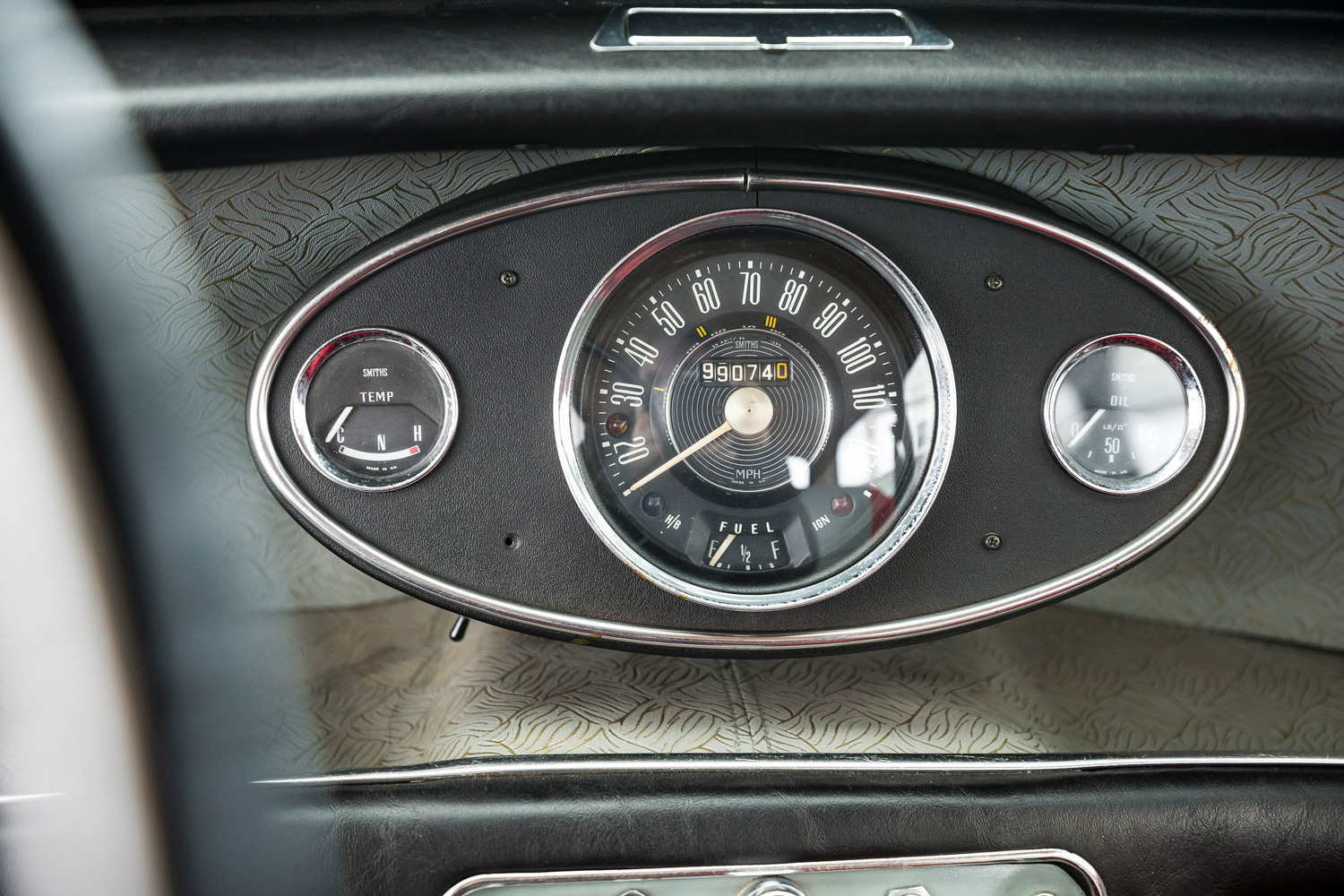
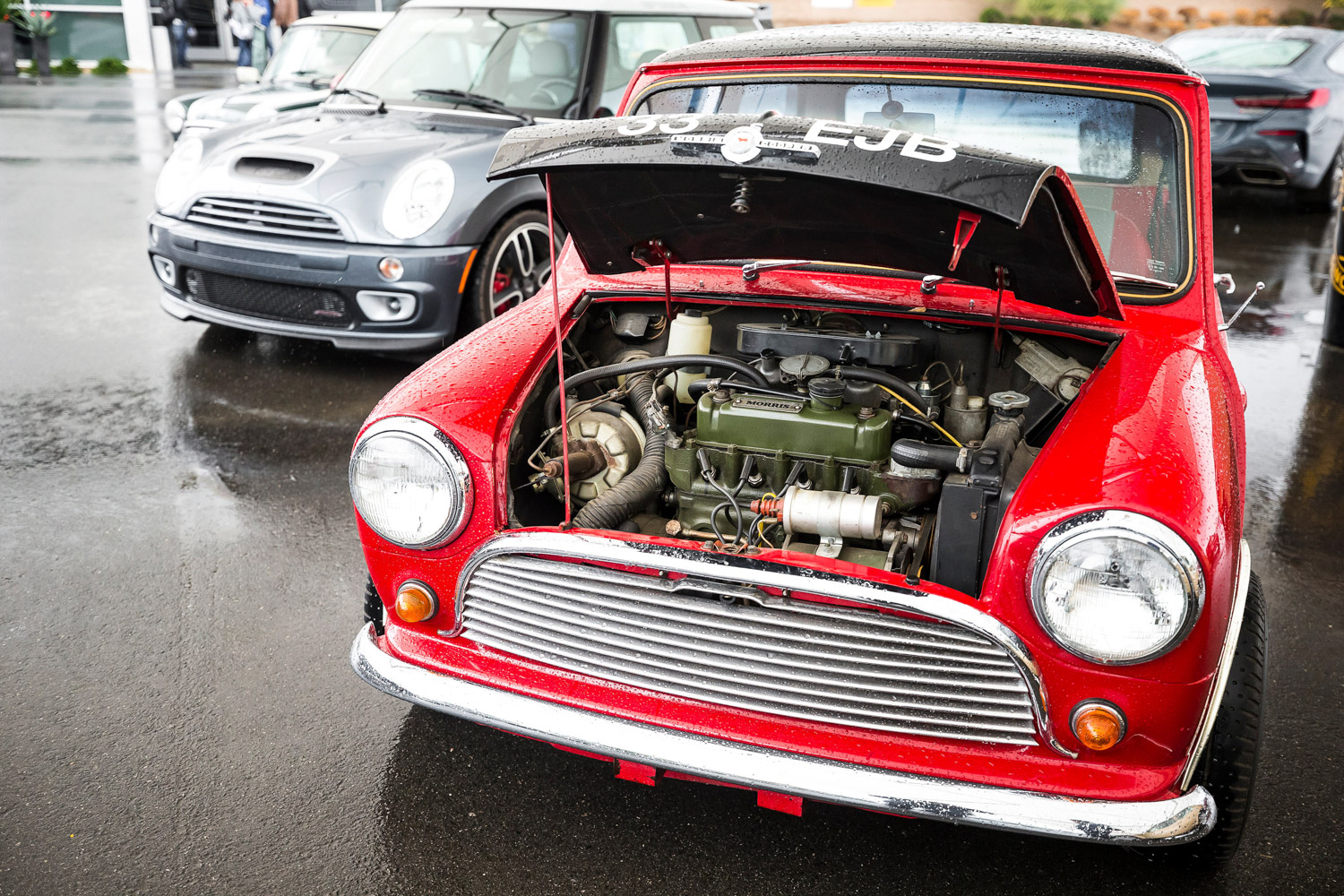
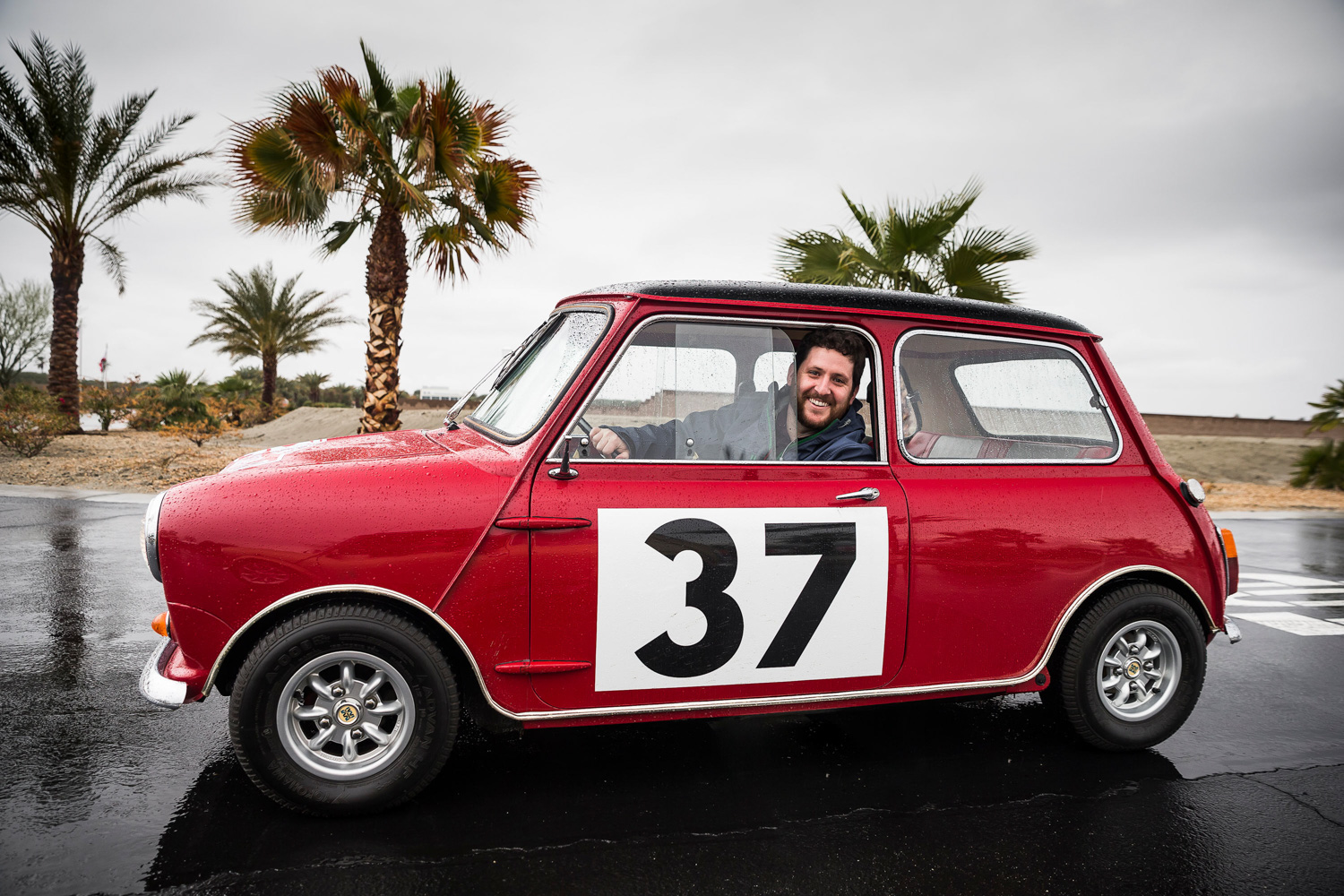
After I finished with the GP, I set my internal clock back 40 years for the ’65 Cooper S. The details are wonderful, down to the red-and-white paint scheme, Monte Carlo graphic on the hood, and twin fuel tanks. It’s unbelievable how low the vintage Mini is, but once you’re inside there’s a pleasant amount of room. The seats are handsome with their two-tone red-and-cream patterns, but the interior is otherwise very sparse. Aside from three center-mounted gauges, there are a handful of knobs and switches for the lights, wipers, and choke.
I pulled the choke and turned the key to fire it up, and the 1275-cc four-cylinder sputtered to life, before immediately dying. Great. Once again, this time with a bit of throttle. The 76-hp engine hummed to life, and I gently eased off the gas to let the engine settle into a nice idle. Pressing the clutch, I shifted into second gear and then first, as I was not totally sure if this four-speed Mini had synchro in first gear. Then, once I eased off the clutch, the Cooper S puttered along happily. There’s something beautiful in its completely analog controls, and before I knew it I was grinning like it the first time I drove a classic. The car felt surprisingly quick, but it was the Mini’s agility that I enjoyed most as it splashed along the pavement. It wasn’t not exactly Rally Monte Carlo in a snowstorm—and I’m not Paddy Hopkirk—but I totally understood the appeal of these old Minis. Their charm is kind of irresistible.
Mini recently teased the upcoming limited-edition GP for its current generation JCW Hardtop. It’ll have a big carbon-fiber wing, and possibly more than 300 hp. That sounds like a blast, but I have a feeling it won’t have the pure hot rod feel of the original GP, not to mention the ’65 Cooper S. Those two cars were the true hot-hatch Minis of their respective generations, and I don’t expect their ferocious spirit to be equaled any time soon.

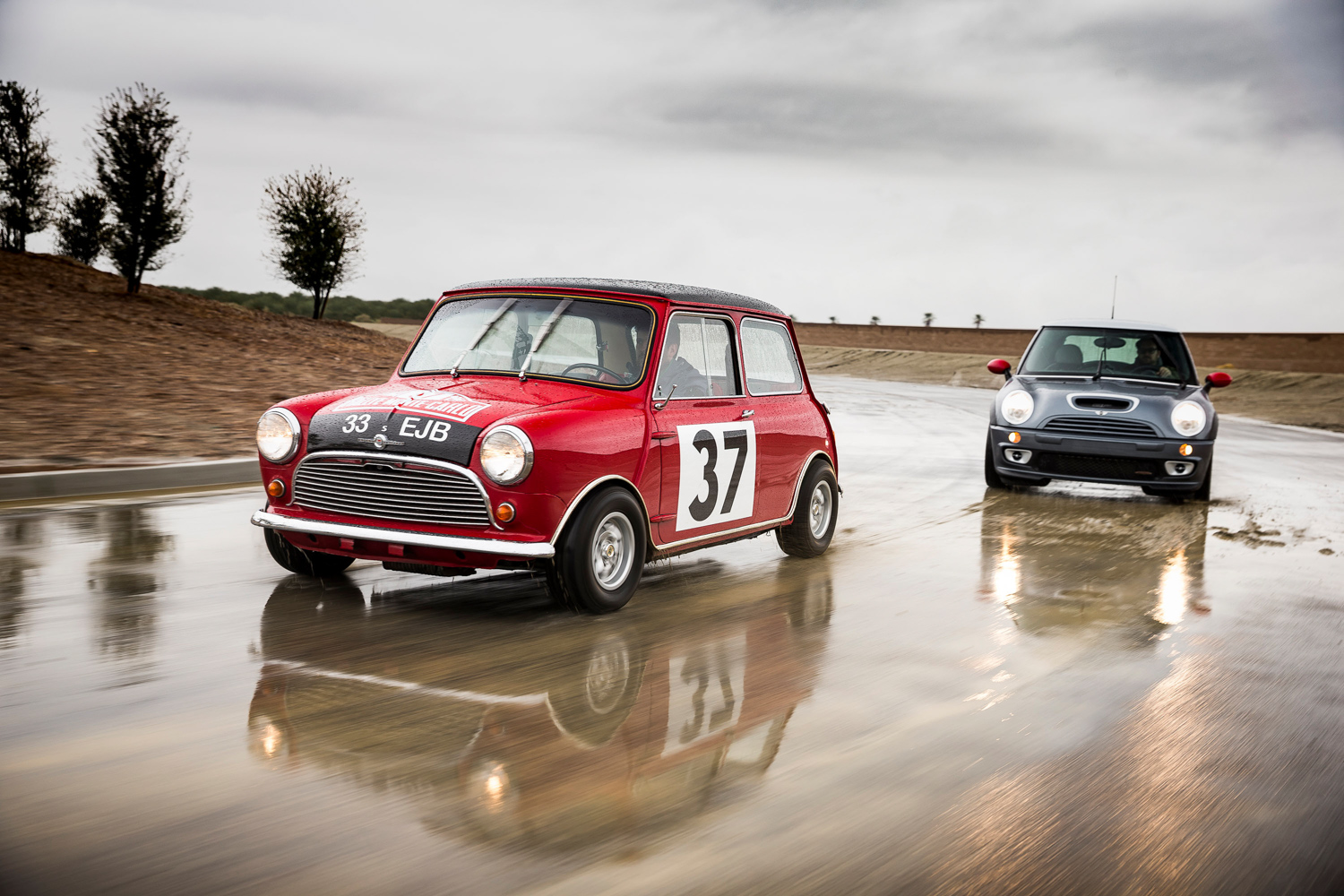
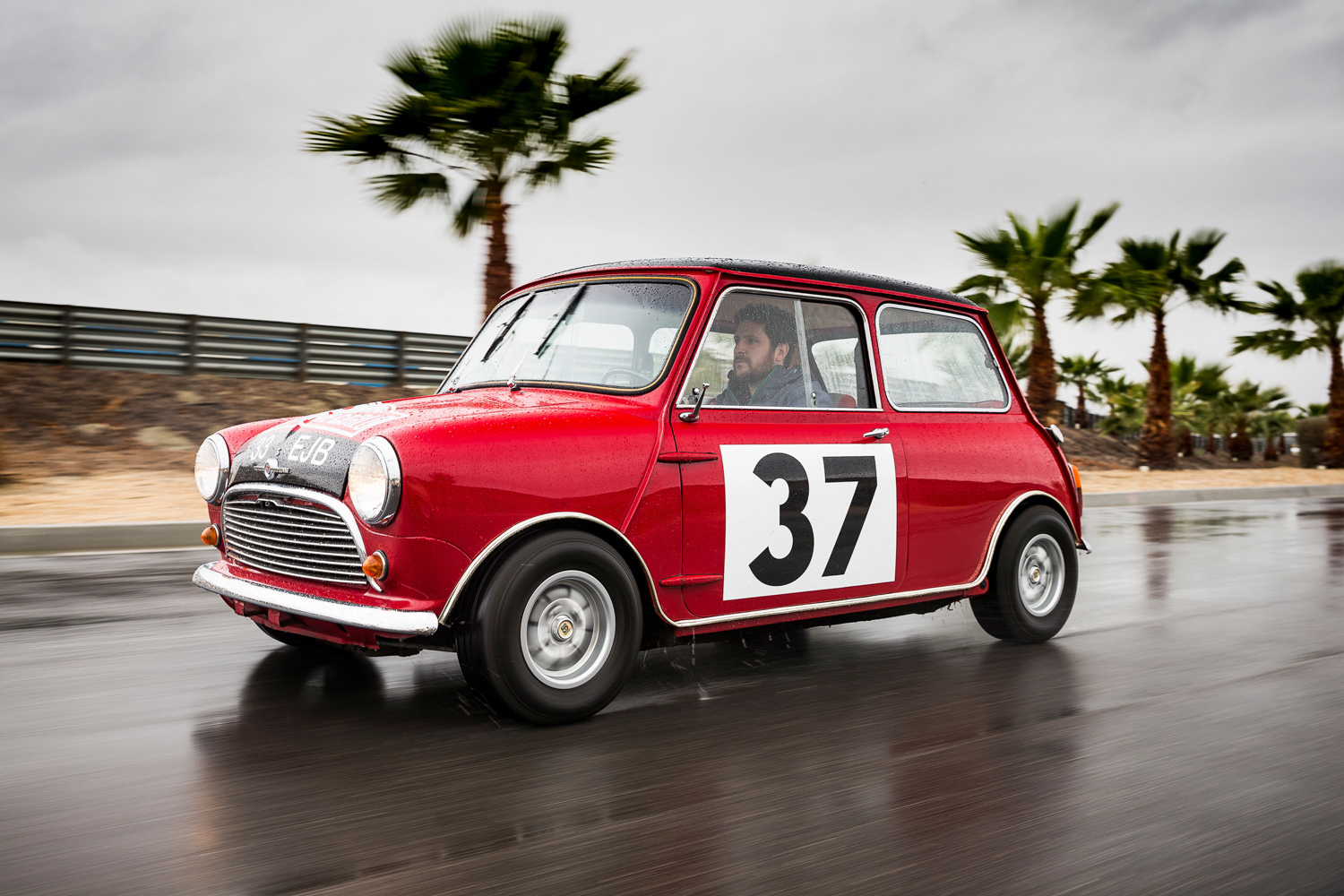
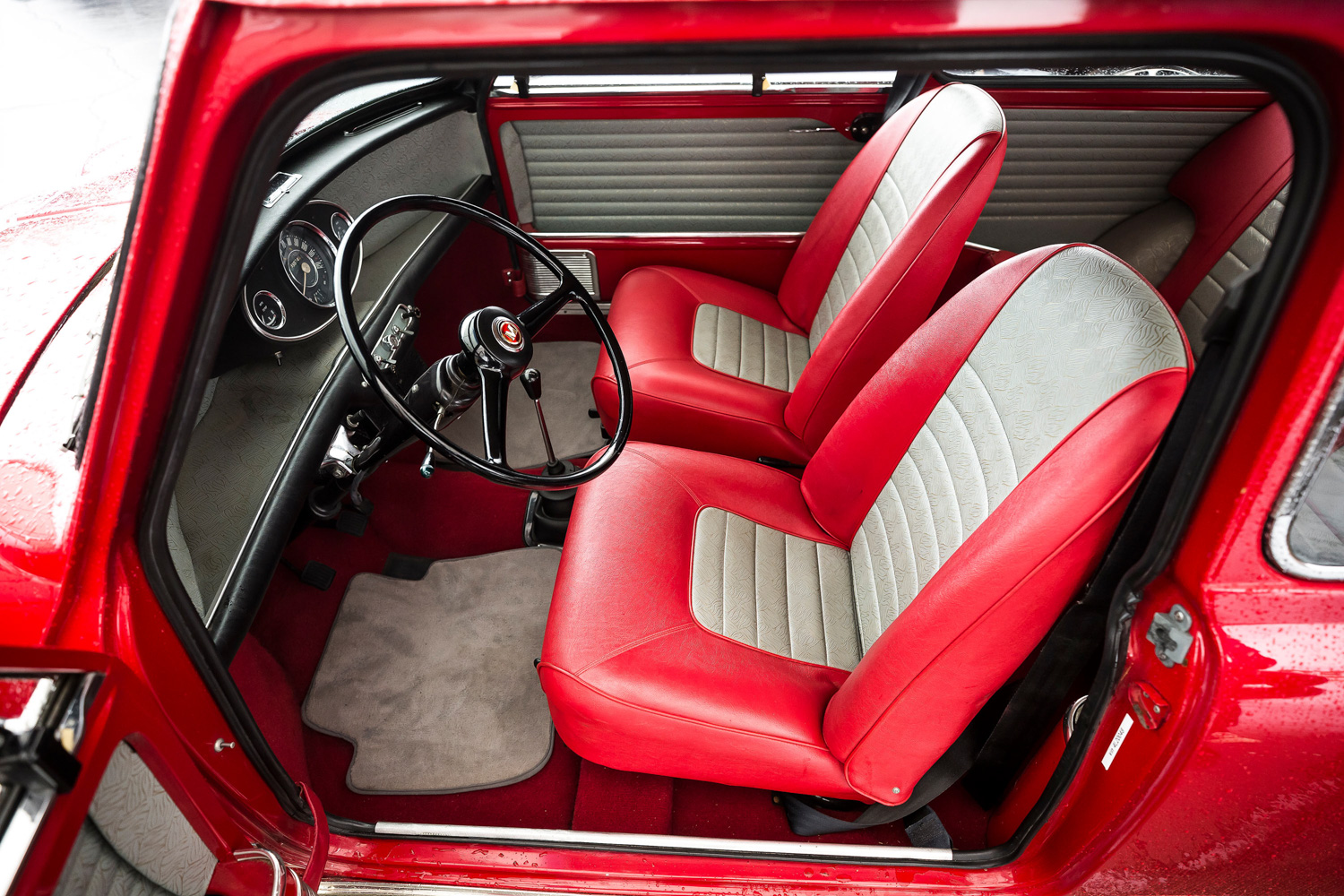
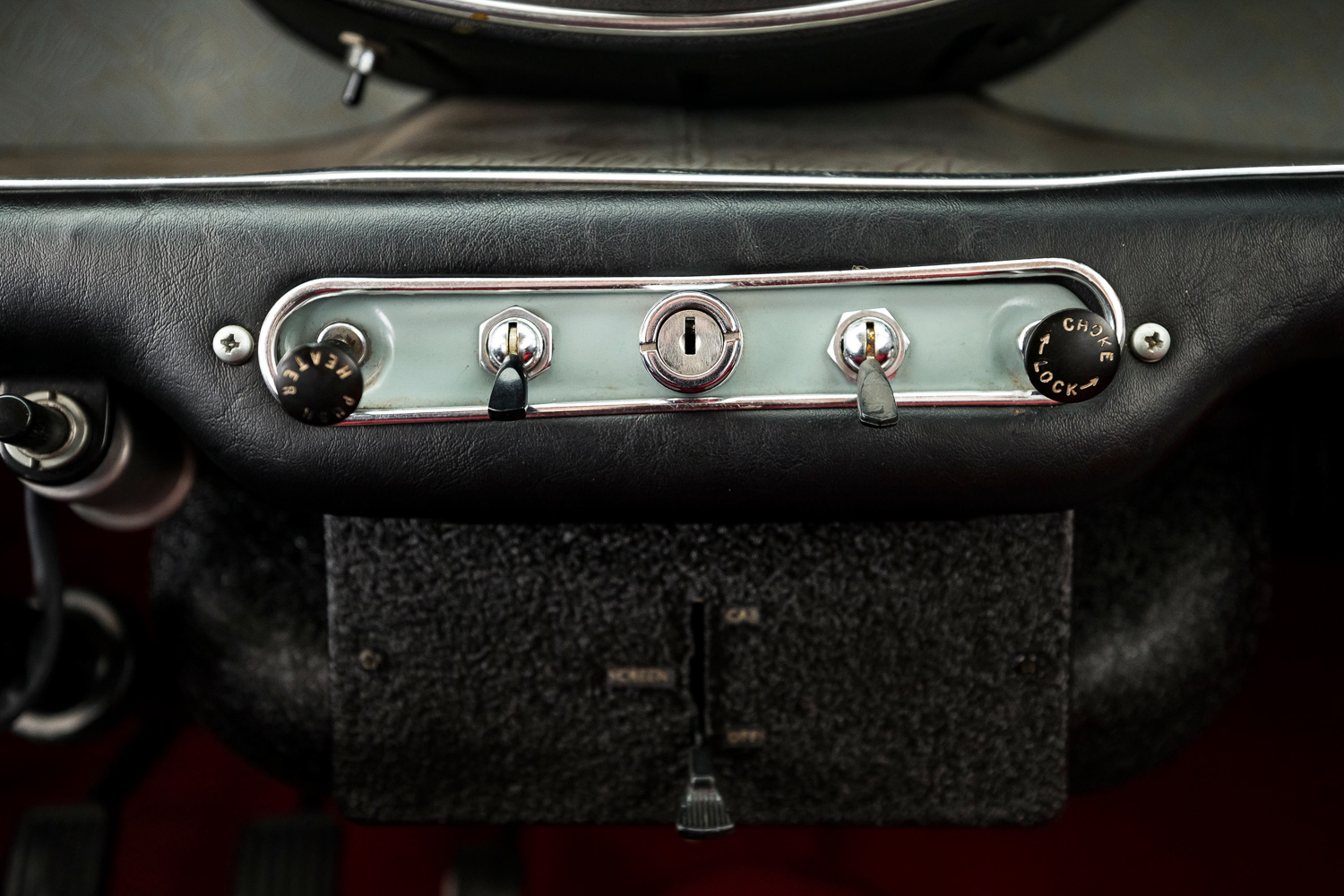
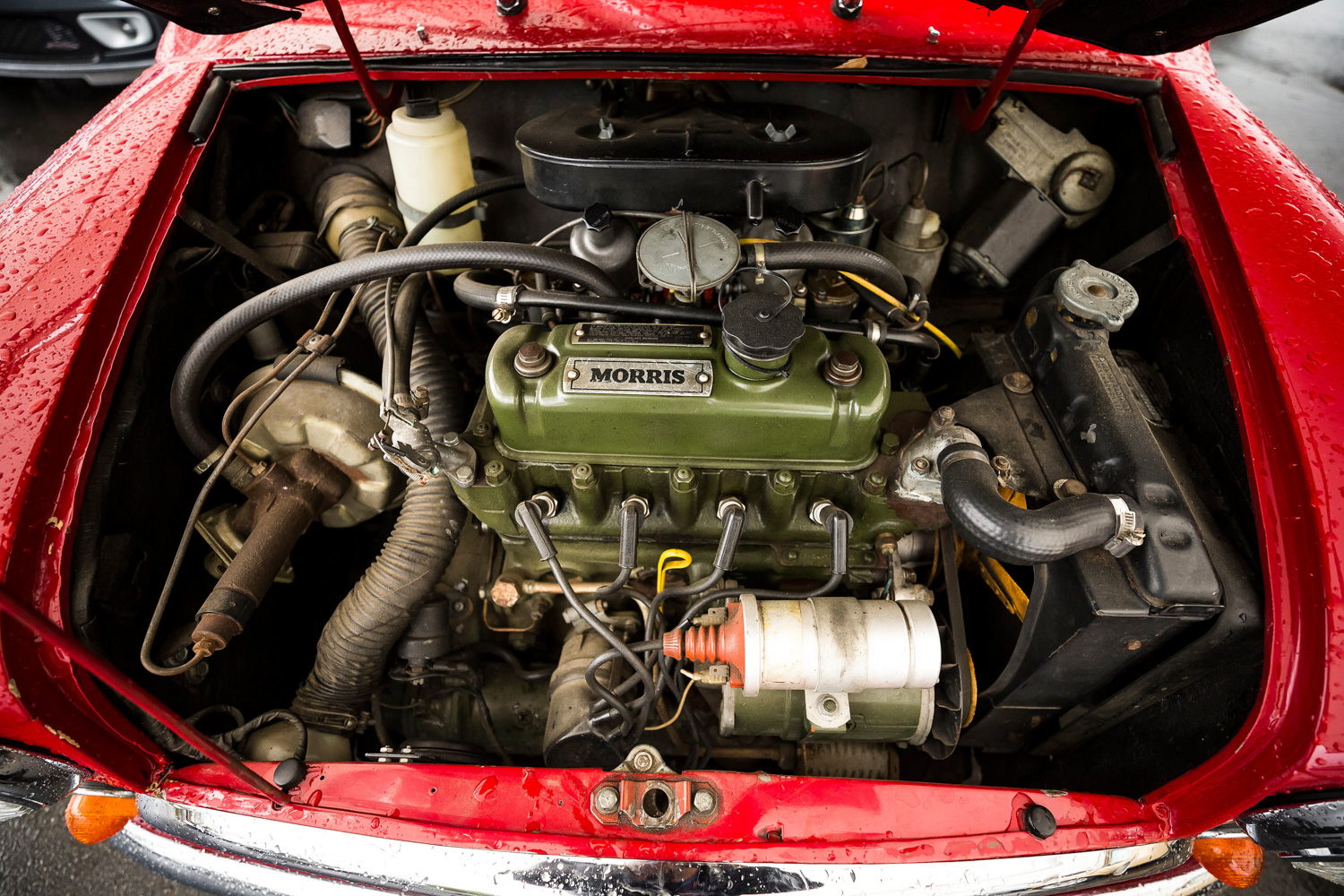
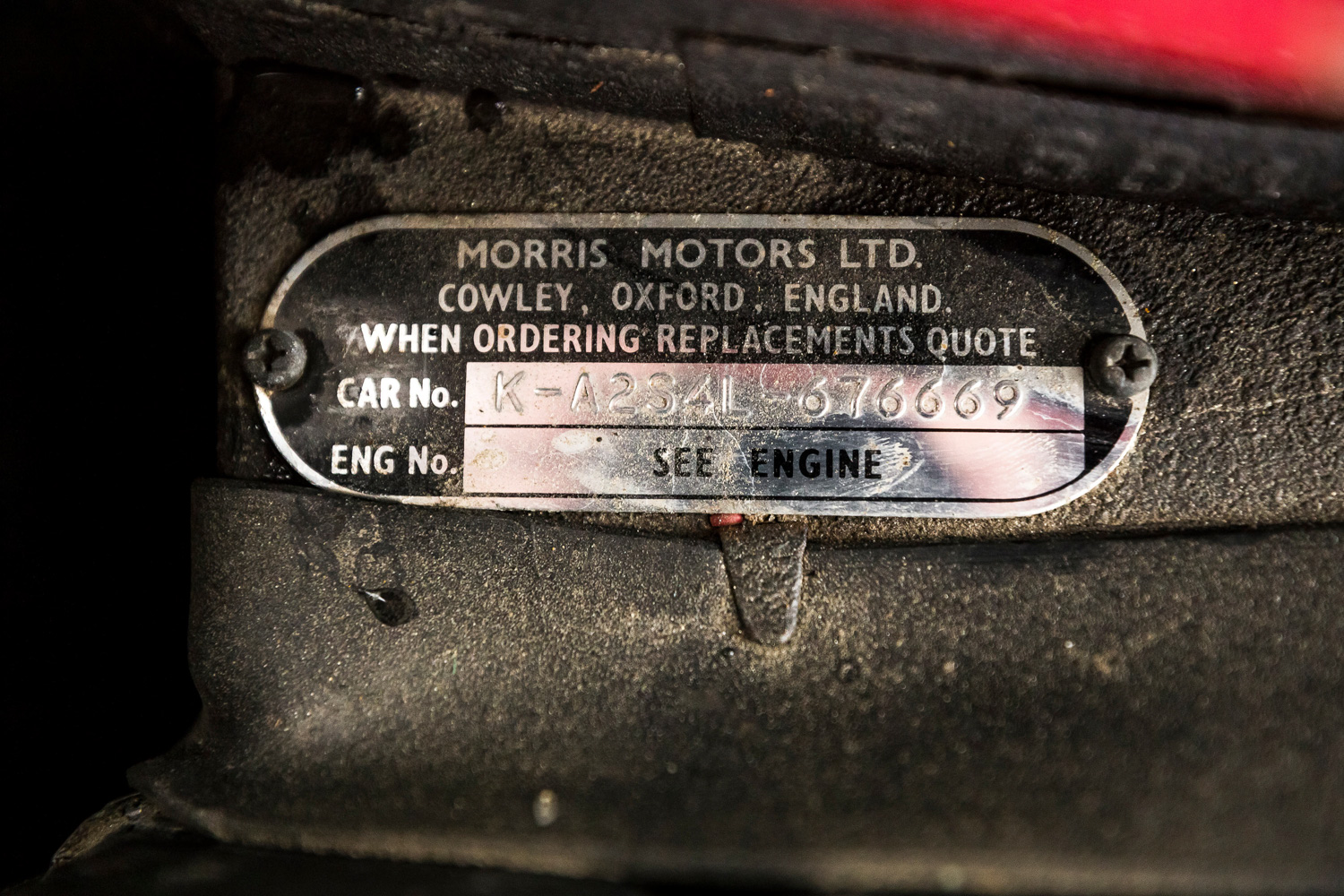
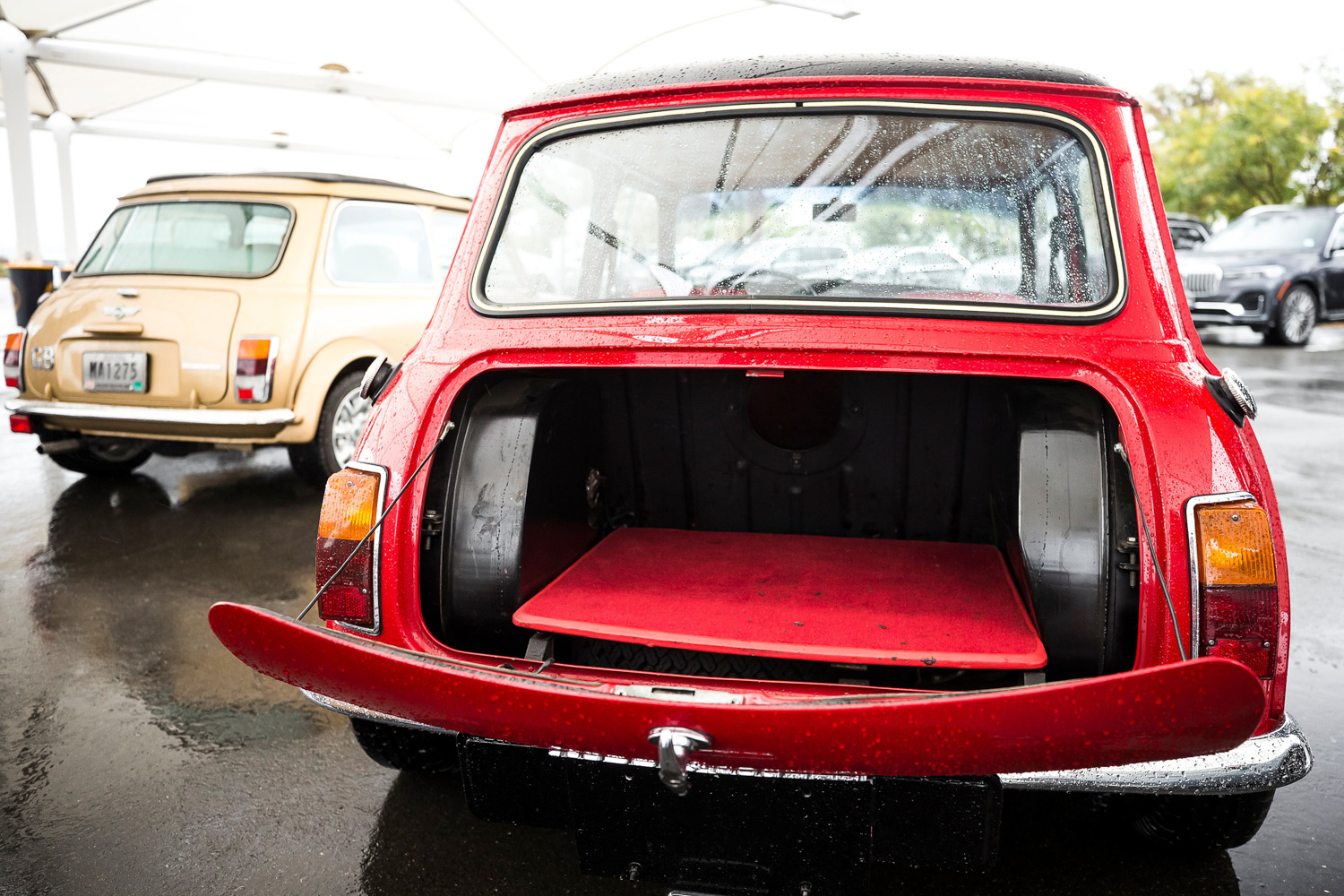
20190227202338)
20190227203118)
20190227203124)

